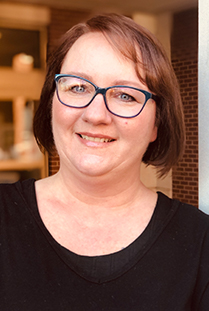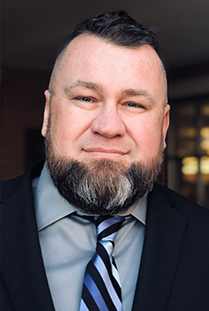Watch six real patients, experiencing a variety of common issues, expertly seen by a physical therapist/ physical therapist assistant team. This course demonstrates effective evaluation and intervention of the older adult in any setting where PTs and PTAs work together. Optimizing the PT/PTA team approach with specific examples of standardized tests and evidenced based treatment techniques allows for effective delivery of best practice for your patients.
PT: As therapists, we face constant demands to provide the best level of care in the most efficient manner, and to document effectively for maximum reimbursement. In this course, you will watch evidence-based, effective, and well documented care as real patients are evaluated by an experienced PT, followed immediately with treatment by a PTA.
PTA: Using appropriate evaluation tools and documenting meaningful results allows the PTA to begin treatment without the need to spend valuable time reassessing the patient on the first treatment visit to determine the course of treatment. Having evidence-based protocols in place provide a starting point for the PTA to jump in and begin the delivery of a great therapy experience. We describe the most effective evidenced based management programs for common diagnoses including lumbar stenosis, CVA, Parkinson’s Disease, knee OA, balance and gait deficits, and peripheral neuropathy. Mike and Kathy provide examples of treatment programs, HEPs, and documentation of each eval and treatment.
Listen to both perspectives as a PT and a PTA provide their unique perspectives on how to work together to get excellent patient outcomes. This course is a must for both PTs and PTAs working in any setting as a team. Mike and Kathy Fagan evaluate and treat 6 different patients in a clinical setting with focus on effective evaluation tools and EBM programs with progression, and the most efficient documentation of the evals and treatments.
What participants are saying . . .“I will use the excellent handouts presented in the course as guides and reminders of specific testing instructions and the data from the tests for improved documentation.”
“I gained knowledge from each patient encounter. It was very helpful to see the eval and go directly to treatment. Creative ideas for therapy supplies i.e., Tupperware lid for slide, blood pressure cuff for pelvic tilt.”
“I found that observing the PT evaluations and PTA treatments using real life patients to be very rewarding and made the content more understandable and relatable to real life experiences in the clinic.”
“I recommend this course to my colleagues because it provides functional techniques and objective tools to facilitate quick improvement in outcomes and specific documentation to prove improvement in function.”
- Introduction – 1 min
- Peripheral Neuropathy – Evaluation and treatment – 55 min
- Knee OA – Evaluation and treatment – 45 min
- Lumbar Stenosis (and SI dysfunction!) – Evaluation and treatment – 40 min
- Parkinson’s Disease – Evaluation and treatment – 45 min
- CVA – Evaluation and treatment – 55 min
- Gait and Balance deficits – Evaluation and treatment – 58 min
- Closing – 1 min
Upon completion of the course participants will be able to
- Compare and contrast tools for documentation that work best for the PT/ PTA team.
- Explain how PT/ PTA can best communicate progression of programs for Lumbar Stenosis, CVA, Neuropathy, Parkinson’s, knee OA, Balance and gait deficits and peripheral neuropathy.
- Describe the most effective EBM programs that can be successfully provided by the PT/PTA team for Lumbar Stenosis, CVA, Neuropathy, Parkinson’s, knee OA, Balance and gait deficits and peripheral neuropathy.
- Discuss the latest evidence-based interventions based on Bennell’s knee osteoarthritis research, Richardson’s peripheral neuropathy protocol and many more.
- Analyze effective documentation of evaluation and treatment.
Upon completion of the course, a certificate of completion for 5 contact hours of educational credit will be awarded.
PHYSICAL THERAPY
Great Seminars Online (GSO) is an Approved CE Provider for PTs and PTAs in CA, IL, NM, NY, OK, TX.
This course has received CE approval from the following state licensure boards or associations: NJ
This course meets the guidelines for CE approval in: CO, CT, ID, IA, KS, ME, NH, NE, SD.
This course has been accepted for CE credit by these states because it has been approved by another state’s board or association: AK, AL, AZ, DE, GA, HA, IN, KY, MA, MI, MN, MS, MO, MT, NC, ND, OR, PA, RI, SC, TN, UT, VT, VA, WI, WY, WA.
INDIVIDUAL APPLICATIONS
If you do not see your state listed, please visit your state board or association’s website and request information for an individual application.
OCCUPATIONAL THERAPY
This course has received CE approval from the following State licensure association: FL
Great Seminars Online courses meet occupational therapy state licensure renewal requirements including but not necessarily limited to these states: AL, AR, AZ, CO, CT, GA, ID, IA, KY, MI, MN, MO, MT, NE, NH, NM, NV, NY, NC, ND, OH, OK, OR, RI, SC, TN, TX, UT, VA, WA, WV, WI, WY
5 Contact Hours - $149.00
Your Instructor
Unlimited access: Once you have purchased a course, you have unlimited access. You may stop and start and rewind as often as you wish. The course will remain in your cart and you are free to review the content at any time. However, continuing education credit is only available for the year in which you purchase a course.
Accessing this course: Click on “Enroll Now.” Once you have submitted the registration information, click “Order Now”. You will then see a “Thank You” message. You will be emailed a username, password and information on how to log in to our learning management system (LMS).
Educational Level:Intermediate
Course Format: Online video course
Target Audience: Physical Therapist, Physical Therapist Assistant, Occupational Therapist, Occupational Therapist Assistant.

